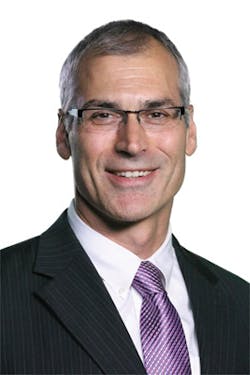
Last month, I had the great pleasure of traveling to San Diego to attend the Optics + Photonics symposium where, among many highlights, SPIE, the international society for optics and photonics, held a special session honoring Nobel laureate Arthur Ashkin and announced its new $2.5 million endowment-matching program. With keynotes and plenaries covering topics such as the latest improvements to optical tweezers, plasmonics-enhanced terahertz spectroscopy, and giant mirrors for telescopes, the symposium attracted more than 4000 registered attendees and 158 exhibitors.
During the event, I met with SPIE Director of Industry Development Steve Anderson to discuss a new partnership that Laser Focus World and SPIE have formed around the Lasers & Photonics Marketplace Seminar, which will be held Monday, February 3, 2020, during SPIE Photonics West. For details about the impact of this great new partnership on the Seminar, see this article. While the Optics + Photonics symposium’s more than 3100 technical presentations present the latest research and development from some of the greatest minds in optics and photonics, similarly, Laser Focus World highlights the latest and greatest photonics technologies and solutions.
In the cover story, for example, BioOptics World Editor in Chief Barbara Gefvert writes about a novel class of fluorescing biological nanomaterials called DNA-stabilized metal quantum clusters that promise to enable next-generation biosensor applications (see article). Senior Editor John Wallace discusses optimization of complex optics with illumination design software (see article). We also present passively cooled high-power laser diodes with nonsoldered joints that show high reliability under hard-pulsed and continuous-wave operation (see article), discuss how freeform and planar phase elements combine for better imaging optics (see article), consider the impact of fixed vs. continuous-zoom tradeoffs on optics testing (see article), cover RTP optical crystals driving LIGO advances (see article), and discuss the impact of artificial intelligence on scientific imaging (see article). As always, I hope you enjoy this issue.
About the Author
John Lewis
Editor in Chief (2018-2021)
John Lewis served as Editor in Chief of Laser Focus World from August 2018 through October 2021, after having served as the Editor in Chief of Vision Systems Design from 2016 to 2018. He has technical, industry, and journalistic qualifications, with more than 13 years of progressive content development experience working at Cognex Corporation. Prior to Cognex where his articles on machine vision were published in dozens of trade journals, he was a technical editor for Design News, covering automation, machine vision, and other engineering topics, for over six years.
